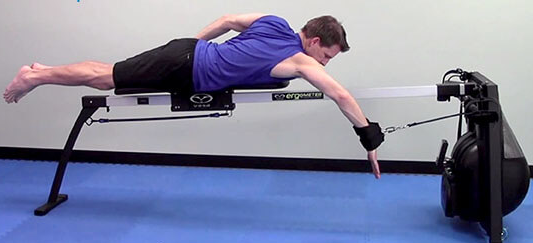Although I’ve heard it over and over, I’m going to say it again: we are living in unprecedented times. Our lives are changing daily, even hourly. Sitting still, taking a deep breath and embracing the constant changes with a flexible and open mind are critical actions. Life is just different. It doesn’t mean we lose contact with what matters most in our lives, in fact, it can bring us closer to those things that really matter. What are the opportunities life is bringing you now? Extraordinary times call for extraordinary action.
Importance of triathlon in our daily lives
In the grand scheme of things, training for and competing in a triathlon are not among the most basic needs in our lives. We train and race because we can, because we love it and because it helps us feel more alive. It is a privilege to do what we do. Now we are faced with an obstacle to our dreams and goals. Are they simply on hold for a few months or a year? Think of all the Olympic athletes who have dedicated their lives to training for four or more years to have their dreams postponed until 2021. We are not alone in the delay of pursuing and achieving our dreams. With flexibility, persistence, special attention, and care to our true, deepest life priorities, does triathlon training still have a place in your life? In the end, I think this is a question we must all answer for ourselves.
Importance of exercise in our daily lives
We all know the great benefits exercise gives us on a daily basis. In times of stress, exercise is an even more important outlet to keep us sane, keep our blood pumping and our minds working at their most rational and clear. Exercise helps to support your immune system. Even a simple walk outside is a mood, body and mind booster.
Adjust, adapt and train for life
The times we’re in require that we be flexible and creative in our training; thus, making your precious training hours, the most effective both physically and psychologically. If you’re following a structured training plan, prioritize flexibility around a scaffolding of structure. This is where personal, custom training and coaching can be most helpful to make adjustments and adapt a training balance that works in your life. It is possible to keep an eye on your biggest goals and dreams. Training and workouts should help alleviate stress, not cause more stress.
General training adjustments
- Please follow all “stay at home” and social distancing guidelines. Take more rest if you are sick or run down. Catching illness before it takes a deep hold in your lungs is the best course of action.
- Train in uncrowded areas (trails!) and at times when fewer people are there.
- Ramp up your strength training and pre-hab work. Improve your strength, balance, and durability to give you improved fatigue resistance to swim, bike, run training and racing.
- Cross-train. If running outside is your only option, add in more walks and hikes. This serves as a way to increase your endurance and durability without the stresses of running. Circuit training is very helpful.
- Indoor training: bike trainers, swim trainers and stretch cords, treadmills. Use any and all equipment and resources available to you.
- Outdoor training: if weather and location allow, get outside!! When you train outside you get a double hit of endorphins from just being out in the fresh air and exercising.
- Run with one or two friends, train with friends, just maintain that social distance.
- If the weather and water temps allow, open water swimming is an option while the pools are closed.
Setting up a home gym & training base
- Look at the equipment you have, look at your budget, look at supply (lots of people are looking to train at home right now!) and take a look at the long-term use of any equipment you invest in.
- Here are some ideas from simple to more complex and costly.
- Use what you have at home and in your neighborhood: hills, stairs, benches for push-ups and dips, tree branches for pull-ups, etc.
- Stretch cords. These are fantastic for dry land swim workouts. Get a light-to-medium weight for swim workouts and a stronger one for strength training. Here’s a workout to get you started.
- Stability ball. This is such a versatile piece of equipment!
- Bike trainer or rollers. Here’s a piece of equipment that will pay dividends in improved cycling fitness for years to come. Prices range from $100 to $1000+.
- Indoor cycling apps. There are so many! TrainerRoad, Rouvy, Zwift are among the most popular.
- Dumbbells, Kettlebells and TRX. All are very useful and versatile for strength training.
- Peloton bike or treadmill with an app to take virtual classes
Equipment-free and at-home workout ideas
Greg’s Gut Buster. Circuit workouts are a great idea if you’re stuck in a small space or want a quick hit workout to get your heart pumping. Here’s one for a run focus:
- Run in place for 30 seconds
- 15-30 jumping jacks
- 5 burpees
- 1-minute rest or easy jog/walk in place
- Mountain climbers for 30 seconds
- 1-minute rest
- Side skip form drill
- Grapevine form drill
- A skip form drill
- Jump rope for 15-30 jumps
- 1-minute rest
- Repeat until the desired fatigue level is achieved. Add more or do less volume/intensity as you like.
Here are some other quick workouts you can do in your living room or back yard.
Here’s a link to 13 bodyweight exercises specifically for triathletes. No training is ever wasted. Even if you don’t make it to the start line in the next few months, you’re giving yourself a leg up on competitors in the future. Stay flexible with yourself and your goals, but stay accountable and keep moving.
